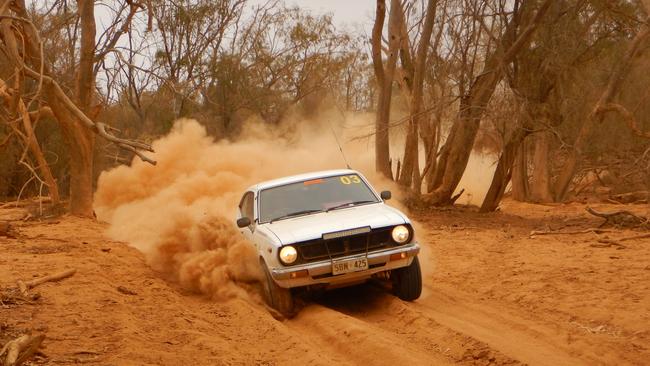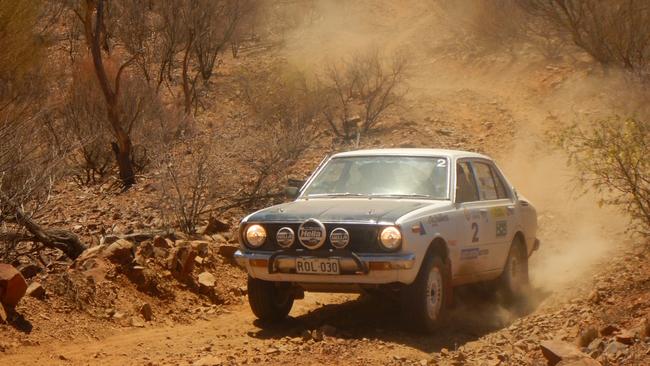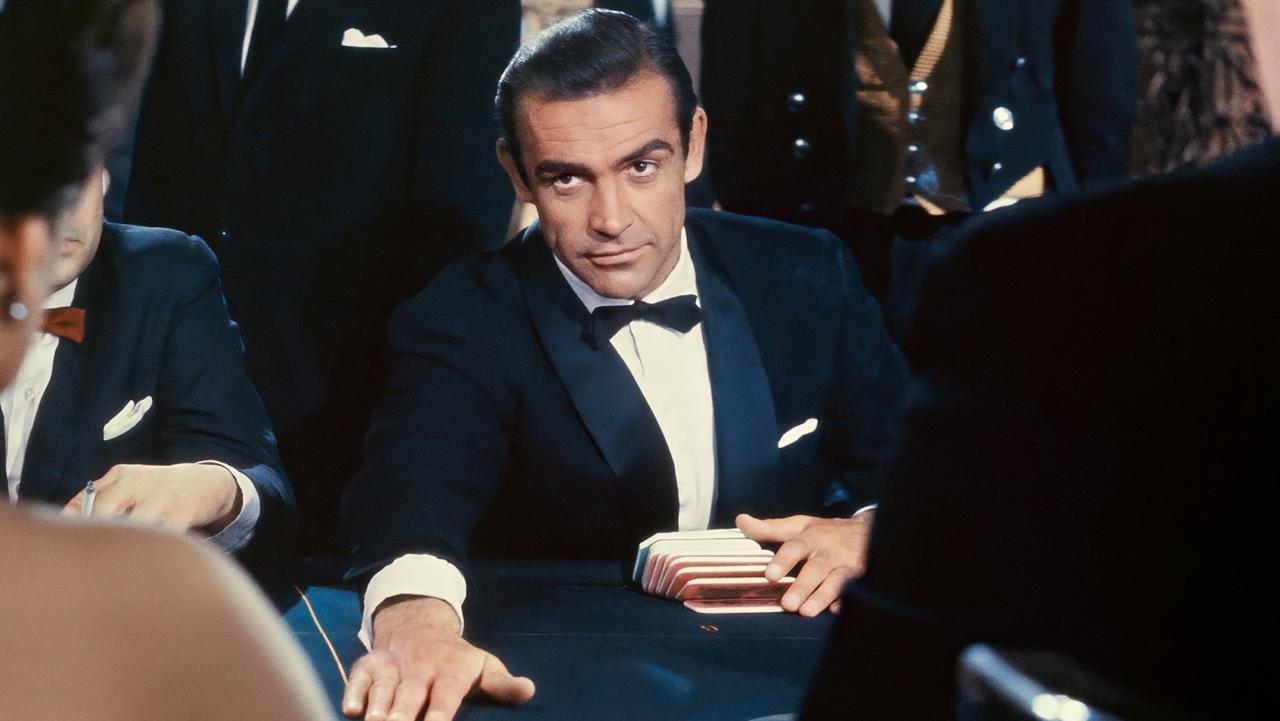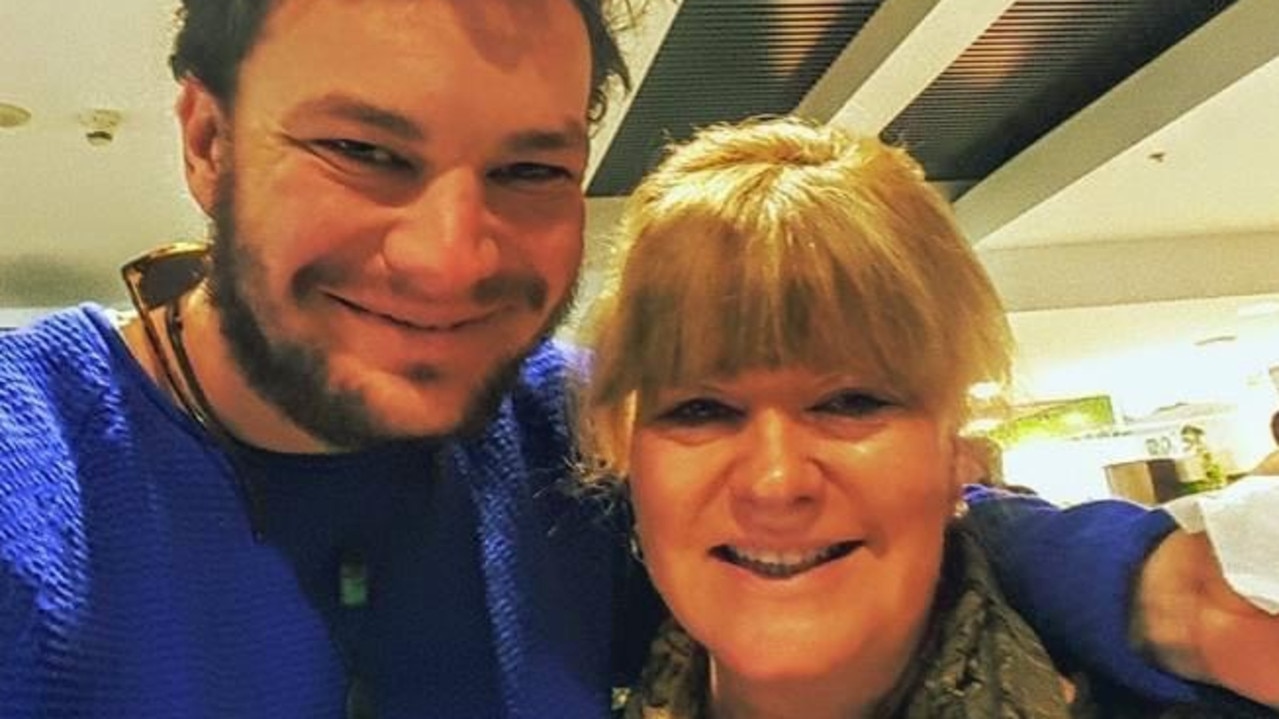Toyota Corollas tackle Outback tracks for annual charity bash
A squad of 40 year old Toyota Corollas tackle South Australia’s harsh outback in the name of charity and unabashed fun.

SA Weekend
Don't miss out on the headlines from SA Weekend. Followed categories will be added to My News.
It looks like the sort of road that needs grappling hooks. Paved with jagged, gnarly rocks and random little boulders, Ken Adams takes one look at the frighteningly steep ascent and floors it.
What the battered little 1978 Toyota Corolla lacks in grunt, it more than makes up for in sheer fighting spirit as it screams, bounces and slithers up the rugged escarpment for yet another successful summit.
I’m on tour with the Rotary Club of Regency Park and their annual Corolla Caper way out in the dusty expanses of South Australia’s Gammon Ranges, beyond Arkaroola and skirting the 5000km Dog Fence. Every year, the dozen or so ageing, diminutive Japanese sedans and coupes head out into the never-never, unfazed by monstrous sand dunes, treacherous riverbeds and hellish hill climbs like the one conquered by “Matilda”, my 87-year-old Uncle Ken’s 1300cc two-door terrier.
One could be forgiven for thinking this is no country for old cars or even older men, but the event has not only survived almost 20 years, it has also grown from a casual “bash” to a smoothly organised affair with the admirable objectives of raising funds for worthy causes such as Cows for Cambodia, Isolated Children’s Parents’ Association, Polio+, disaster aid for Bhutan as well as other community interests and charities.

“It’s always been a great way to enjoy the fabulous Aussie outback, and injecting funds into rural communities and raising money for worthwhile charities,” says organising committee head and my Uncle Ken’s co-driver, Ron Rogers.
In 18 years, the Corolla Capers have raised about $60,000 for Rotary Club Charities as well as other recognised community projects and causes while having fun and testing driver and mechanical limits on roads and tracks as far afield as Oodnadatta, Ceduna and Broken Hill.
This year’s 2000km route, delayed by COVID restrictions and limited by the accompanying border closures, sees our motley entourage head north from Gepps Cross to Marree via Hawker, the Flinders Ranges and Parachilna.
Greened and refreshed by recent rain, the ancient landscapes are resplendent in new foliage and ground cover, sure to put a smile on the faces of the hardworking graziers who have toiled this unforgiving land for more than a century.
We’re reminded of this with a visit to the restored cottage of Sir George Hubert Wilkins at Mt Bryan East, right on Goyder’s threshold in our Mid North.
Wilkins’s father, Henry, was one of the first children born after the arrival of the HMS Buffalo in SA in 1836. Young George was the last of 13 children born to the family who was then trying to eke out a living at Mt Bryan. In 1908, at the age of 20, he ran away to London, leaving his family, the cottage and the thankless life on the land behind, beginning a most amazing career of adventure and discovery.
Our trail is steeped in railway history, too. The first trains started leaving Port Augusta in 1879, heading northeast to Quorn. The steel tendrils of South Australia’s railways branched out all across the region ferrying passengers, coal and cattle back to Port Augusta and Adelaide. The Ghan line was rebuilt in 1980, leaving the little towns and sidings along the old route to wither. The last coal train left Leigh Creek in 2016.
The former railway towns like Hawker, Terowie, Parachilna and Lyndhurst have either evolved or perished. Hawker has become the jumping-off point for road-tripping tourists heading to the Flinders and Wilpena, Terowie is preserved as a living ghost town, while Parachilna is home to the famous Prairie Hotel and its iconic “Feral Feast”. Phoenix-like Farina now has a working restored bakery among the rubble while Lyndhurst, however, is just a pub and a truck stop at the start of the long Strzelecki Track.

Along the way, we create our own campsites, either in the grounds of a remote station or in the few rooms or cabins offered by a country pub, like the car park at Cradock. Tents and Corollas populate the landscape, under trees, in the open or around a central fire pit.
“Big Ron” Lillecrapp’s muscular LandCruiser tows an impressively outfitted trailer of his own design with fridge, folding benches, storage and its own power. Another trailer containing trestle tables, gas barbecues, a spare gearbox and sundry kit follows.
Lugging these heavy double-axle units on the same barebone tracks the Corollas follow is a challenge in itself. How do I know? Because I’m in charge of the second unit and am forever mindful not to plunge too hard into creek beds or over “whoop-dee-doos” lest I catapult the contents into the scenery. Needless to say, I’m regularly last into camp each evening, but at least my cargo is intact.
Visiting the various stations is an eye-opener for many of the city-bound Caperites. Life on the land in South Australia’s frequently parched and scorching-hot outback is totally foreign to our understanding. We may as well be on Mars.
Rob Searle in Car 3, one of the better-prepared Corollas, is missing gears. His immaculate white sedan with hardened suspension and mag wheels looks for all the world like a proper rally car, but the high-revving enthusiasm of the engine is not matched by the transmission and an emergency stop is arranged at Mundowndna station, 150km down the track.
The car is ushered into a Kidman-era lean-to shed with mulga beams and well-weathered iron roofing. While the bush mechanics strip out the faltering gearbox and fire up the oxy welder, there’s time to explore the old stone and mud buildings. In one we find racks of old saddles and sundry leather dating back almost a hundred years. It’s a time capsule with old party-line telephones, random enamelware, tools of no apparent purpose and lots of red dust.

Over the decades, graziers have learned to live with the land and accept its harsh offerings. We spend two nights at Wilpoorina Station as guests of the Litchfield family who’ve been in this district for more than 60 years. I throw a camp stretcher into the corner of an old building I learn was once the hospital at Farina, moved here by legendary Adelaide-born stockman and pastoralist Sidney Kidman in 1925 as shearers’ accommodation.
In a jocular, yet earnest fireside chat that evening, we learn just a little of what it takes to survive and thrive in this unforgiving country. Gordon Litchfield says he’s seen three major changes in his time at the station.
“One, reliable road transport which could move a mob of cattle in two days the same distance it once took weeks to walk them – all the while eating out the vegetation along the way,” he says.
“Second, ‘poly’ pipe, which allowed us to spread the water and stock out from the few bores we had and thirdly, the Calicivirus (first released in 1996), which pretty much knocked out the rabbits here.
“One year, at the peak of the rabbit plague, there were seven million rabbits harvested on the adjacent property. Based on the seven-to-one stocking ratio, that means a million sheep could have run instead of the f..king rabbits.”
These days, Litchfield, wife Lynette and veterinarian daughter Ellen, run hybrid Dorper sheep, an exotic crossbreed from South Africa which has adapted well to the tough climate and produces quality lamb for the gourmet meat market. Ellen is now busy promoting sustainable sausages and we are only too happy to throw a few on the barbecue for dinner.
We spend all day and the next just driving through Wilpoorina, along part of the 5000km-long Dog Fence, a section of the old Strzelecki Track and into Mundowndna Station, owned by Litchfield’s brother Peter. The Litchfields also bought neighbouring Mount Lyndhurst in 2016, bringing their landholding here at the southern end of the Birdsville Track to 6000ha.
Our route continues along rubbly tracks through Murnpeowie and Mount Freeling stations, Arkaroola and the former copper mining village of Blinman, all with their own stories of doing it tough. In a scene that could be from any number of science fiction movies, we come across the abandoned talc mine at Mount Fitton with its piles of otherworldly scrap metal, old car bodies and corroded machinery.
It’s nigh impossible to imagine life here in Kidman’s day. The cruel isolation, the incessant flies and crippling heat all conspired to make life hell for the unfamiliar Europeans on the traditional lands of the hardy Dieri and Adnyamathanha people, but persist they did, adapting to the harsh realities and often at great personal cost.
The cars in our jolly group might be best remembered as being borrowed from mum for a Saturday night hamburger in our youth, but they have shown true resilience and dependability in an environment that would have destroyed many contemporary vehicles.


